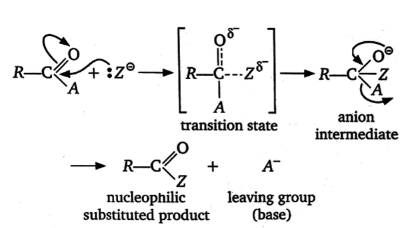Acyl chloride> Acid anhydride> Ester> Amide
The ease of nucleophilic substitution is depended upon the nature of leaving the group. When the leaving tendency of a group in a compound is high, then the compound is more reactive towards nucleophilic substitution.
The nucleophilic acyl substitution is completed in two-step as shown below.

The reactivity of the compound may be explained on the basicity of the leaving group. A weaker base is a better leaving group. The basicity order is as:
Cl- < RCOO- < RO- < NH-2
Hence, the order of leaving tendency is
Cl- > RCOO- > RO- > NH-2 and therefore, the order of reactivity of acyl compounds is as:
Acyl chloride >Acid anhydride > Ester > Amide